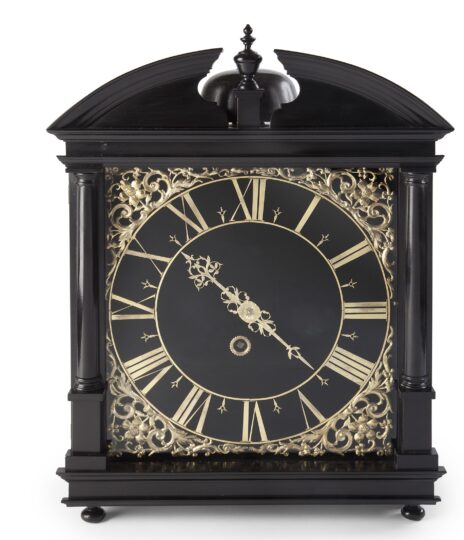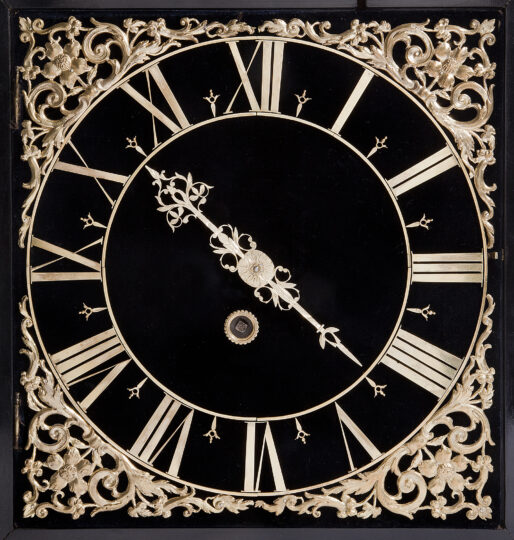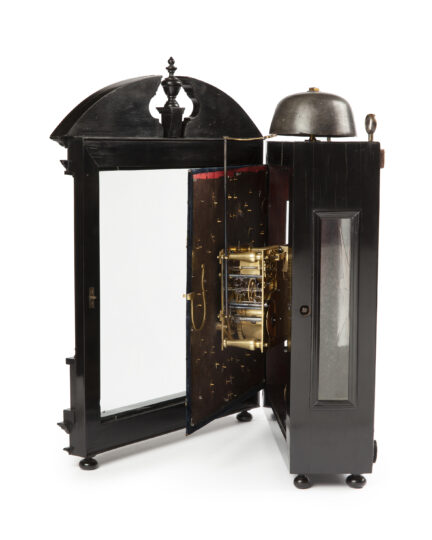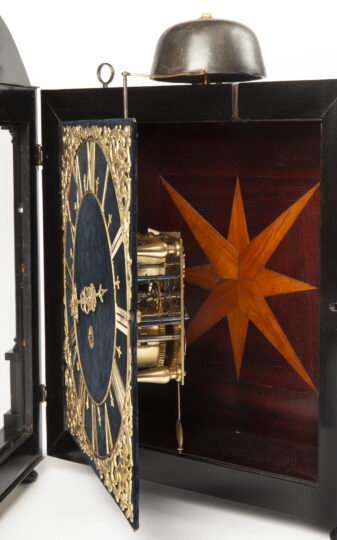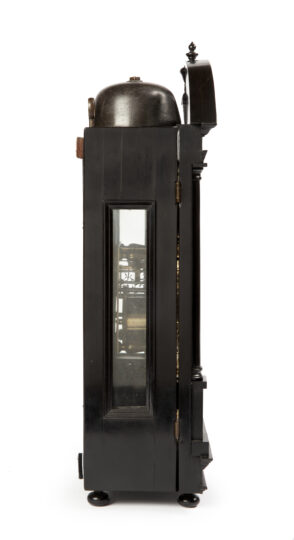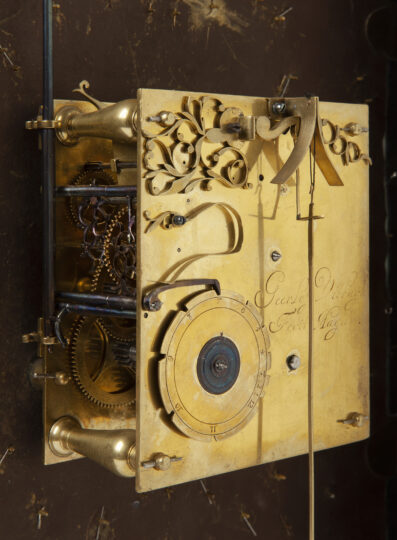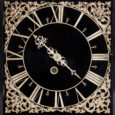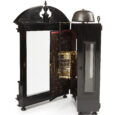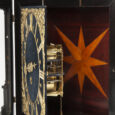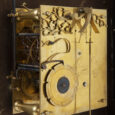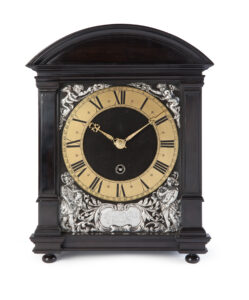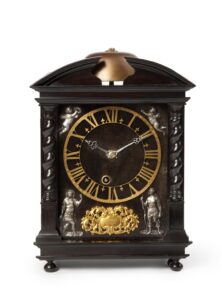HAGUE CLOCK Geerlof Visbagh Fecit Hagae Ca. 1680 Holland
M&R 44
HAGUE CLOCK
Signed: Geerlof Visbagh Fecit Hagae
Circa 1680
Holland
Movement
The brass movement is constructed between plates, connected by baluster-shaped pillars. It is driven by a single barrel and consists of going and striking trains. The going train has a verge escapement with short pendulum, which is silk suspended between cycloidal cheeks. The striking train is regulated by a count wheel and indicates the hour fully on a bell. The maker has signed the backplate Geerlof Visbagh Fecit Hagae.
Dial
The dial plate is covered with black velvet and has a skeletonised gilt-brass with Roman hour numerals and half-hour markers. The time is indicated by a single beautifully made pierced and engraved gilt-brass hand. The corners are embellished by chased and pierced gilt-brass spandrels depicting floral and leaf motifs. The winding hole is situated in the middle and has a nicely worked gilt-brass grommet.
Case
The ebony-veneered pine case is surmounted by a moulded broken-arch pediment, behind which the bell is situated. There is a turned vase-shaped wooden finial on a base in the gap of the arch. The front door is flanked by two half-round pillars with high bases and Doric capitals. There are framed rectangular windows on both sides, so that the movement is visible. The case rests on five ball feet, the fifth to prevent the clock from falling over when the door is opened and the clock is used as a table clock.
Duration 1 week
Height 48 cm.
Width 35 cm.
Depth 13 cm.
Literature
Dr. R. Plomp, Spring-Driven Dutch Pendulum Clocks 1657-1710, pp. 216-242.
The maker
Geerlof Visbach was born in 1643. He was active as a clockmaker in The Hague around 1680 and died in 1709. He was the younger brother of the famous maker, Pieter Visbagh (1634-1722), also working in The Hague.

